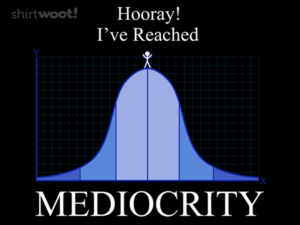We addressed the subject yesterday and today we see that Alexander Green writing at Liberty Through Wealth made observations succinct and to the point:
The Best Stock Market Signal in 61 Years?
- The Dow dropped more than 800 points yesterday, but it’s not time to panic.
- Today, Alexander Green explains the factors affecting bond and stock yields and how investors should react to this major buying signal.
The Dow swooned over 800 points Wednesday in reaction to the “inverted yield curve.”
That means, of course, that interest rates on short-term bonds are now higher than those on longer-term bonds.
The yield curve has inverted before every recession since 1955.
Does this mean a recession – or a serious bear market – is now on our doorstep, especially given the recent trade tensions with China?
It does not.
For starters, past recessions have started an average of 15 months after the inversion.
And there are plenty of signs – including near-record-low unemployment, rising wages and record-high household income – that the economy remains plenty healthy.
One reason U.S. bond yields have dropped is that foreign bond yields in Europe and Japan are so much lower.
Indeed, the yield on more than $15 trillion of global bonds is negative, guaranteeing holders that they will get back less than their original investments.
This motivates international investors to seek higher yields in the good ol’ U.S.A. In short, their buying drives our yields lower.
Now we’ve reached an important tipping point… one I’ve pointed out before.
Just weeks before the stock market made a dramatic bottom in early 2009, I wrote an Investment U column titled “One of the Best Buy Signals in 51 Years.”
I have no idea how many readers acted on my analysis. After all, the financial crisis was in full swing and investor sentiment – to quote Jed Clampett – “was lower than a hog’s jaw on market day.”
But folks who bought stocks on this signal made gobs of money.
It flashed again in the summer of 2011 – and I pointed it out again. The market is up severalfold since then.
Now – for only the third time in 61 years – this uncanny signal is ringing like a fire alarm once more.
Let’s examine exactly why this is one of the best and most accurate signals in stock market history…
Market Yields: Stock vs. U.S. Treasurys
In the first half of the 20th century, investors found that if you bought stocks only when the market’s yield exceeded the yield on 10-year Treasurys, you were in for every single major rally.
The returns were huge – and the system made perfect sense.
Stocks are riskier than bonds, market participants reasoned, so they should yield more to compensate for greater volatility and the likelihood of occasional losses.
The system worked like a charm until 1958. Then it stopped cold. Why? Because for the next half a century, stocks never yielded more than Treasurys.
Public companies began using their cash flows to fund operations and acquisitions rather than paying out dividends to shareholders.
With stock yields sharply lower, most analysts reasoned that the indicator was dead, that the yield on stocks would never again top bonds.
Indeed, it took a full-blown financial crisis for it to happen.
And it’s happening again now, thanks to the dive in government bond yields and the simultaneous socking that stocks have undergone.
(Rising bond prices reduce bond yields while falling stock prices increase dividend yields.)
For only the third time since 1958, stocks are yielding more than bonds: The S&P 500 currently yields 1.91%, while 10-year U.S. Treasurys yield 1.54%.
Granted, both yields are lower than normal.
But understand that an investor who buys an S&P 500 index fund will earn more over the next decade than an investor who buys 10-year Treasurys, even if equities go nowhere.
In fact, this is true even if dividends – which historically rise 5.8% per year – don’t increase one iota either. (Not likely.)
History Says… Stocks Are a Terrific Long-Term Buy
This indicates that stocks remain a terrific long-term buy, while Treasurys – which offer a yield unlikely to even match inflation – are guaranteed to deliver meager returns.
This doesn’t mean, of course, that stocks can’t sell off more in the short term or that bond prices – which move inversely to yields – won’t rally further.
And there are no guarantees in the world of stock market investing.
But as Patrick Henry famously said, “I know no way of judging the future but by the past.”
Good investing, Alex


“Potter’s not selling, Potter’s buying.”